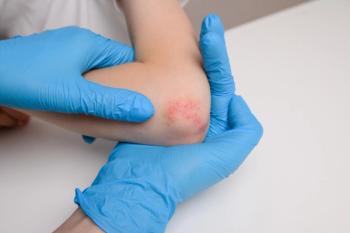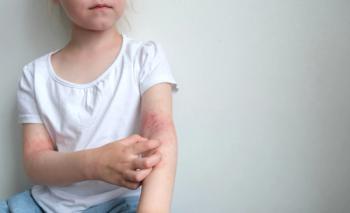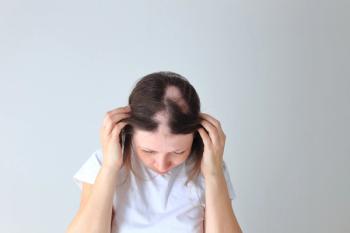
Acne Found to be Common Side Effect of Atopic Dermatitis Treatment
Predisposing factors contributing to development of acne in both groups were the use of concomitant medications associated with acne, family history of acne, and a medical history of acne.
In the phase 3, double-blind trial Rising Up in Japan, investigators found that patients given upadacitinib for treatment of moderate-to-severe atopic dermatitis (AD) had a higher incidence of acne than patients given placebo.1 Mild to moderate acne was dose-dependent and managed with standard treatments.
Patients 18 to 75 years with moderate-to-severe AD as assessed by the Eczema Area and Severity Index, validated Investigator Global Assessment for Atopic Dermatitis, body surface area affected, and the Worst Pruritis Numerical Rating Scale with symptoms for at least 3 years were included.
Rising Up was a randomized trial of 272 individuals conducted at 43 sites in Japan to assess the safety and efficacy of upadacitinib for the treatment of moderate-to-severe AD. “The study consisted of a 35-day screening period; a 16-week placebo-controlled, double-blind treatment period; a 36-week blinded extension period (from week 16 to week 52 of treatment); and an open-label extension period (from week 52 to week 160 of treatment), followed by a 30-day follow-up period.”
Patients were randomly assigned to receive 15 mg of upadacitinib once a day, 30 mg once a day, or placebo. All groups received treatment in combination with concomitant topical corticosteroids. After 16 weeks, patients given placebo were re-randomized to either 15 mg or 30 mg upadacitinib. Use of concomitant topical medication was optional after 16 weeks.
Investigators evaluated the incidence, severity, duration, clinical characteristics, and management of treatment-emergent acne events from baseline to week 16 and again at the 52-week cutoff point. The National Cancer Institute Common Terminology Criteria for Adverse Events version 5.0 was used to assess acne severity.
Including patients who were given placebo at baseline and re-randomized at 16 weeks, a total of 133 patients received 15 mg upadacitinib and 136 patients received 30 mg upadacitinib. A total of 24 patients discontinued the trial.
In the first 16 weeks of the study, 13.2% of patients given upadacitinib 15 mg experienced acne, 19.8% given 30 mg experienced acne, and 5.6% of those given placebo experienced acne. The cases were mild to moderate in severity. Adults 18 to less than 30 years old had the highest incidence of acne.
At 52 weeks, 17.3% of patients receiving upadacitinib 15 mg and 32.4% of patients receiving upadacitinib 30 mg experienced acne, with most cases occurring on the face. The average time to onset of acne was similar between groups receiving 15 mg or 30 mg upadacitinib. Of the 80 acne events that began by week 52, 33 had resolved by the cutoff date.
Predisposing factors contibuting to development of acne in both groups were the use of concomitant medications associated with acne, family history of acne, and a medical history of acne. The authors did not observe a pattern to time of acne onset.
Hayashi et al concluded, “although acne is one of the most common treatment-emergent adverse events seen with upadacitinib treatment in adolescents and adults with moderate-to-severe AD, the events are readily manageable with standard acne treatment.”
Reference
1. Hayashi N, Ikeda M, Liu J, et al. Acne among Japanese patients with atopic dermatitis receiving upadacitinib in the phase 3 Rising Up study. Dermatol Ther (Heidelb) 13,1817–1830(2023). https://doi.org/10.1007/s13555-023-00961-9
Newsletter
Pharmacy practice is always changing. Stay ahead of the curve with the Drug Topics newsletter and get the latest drug information, industry trends, and patient care tips.




